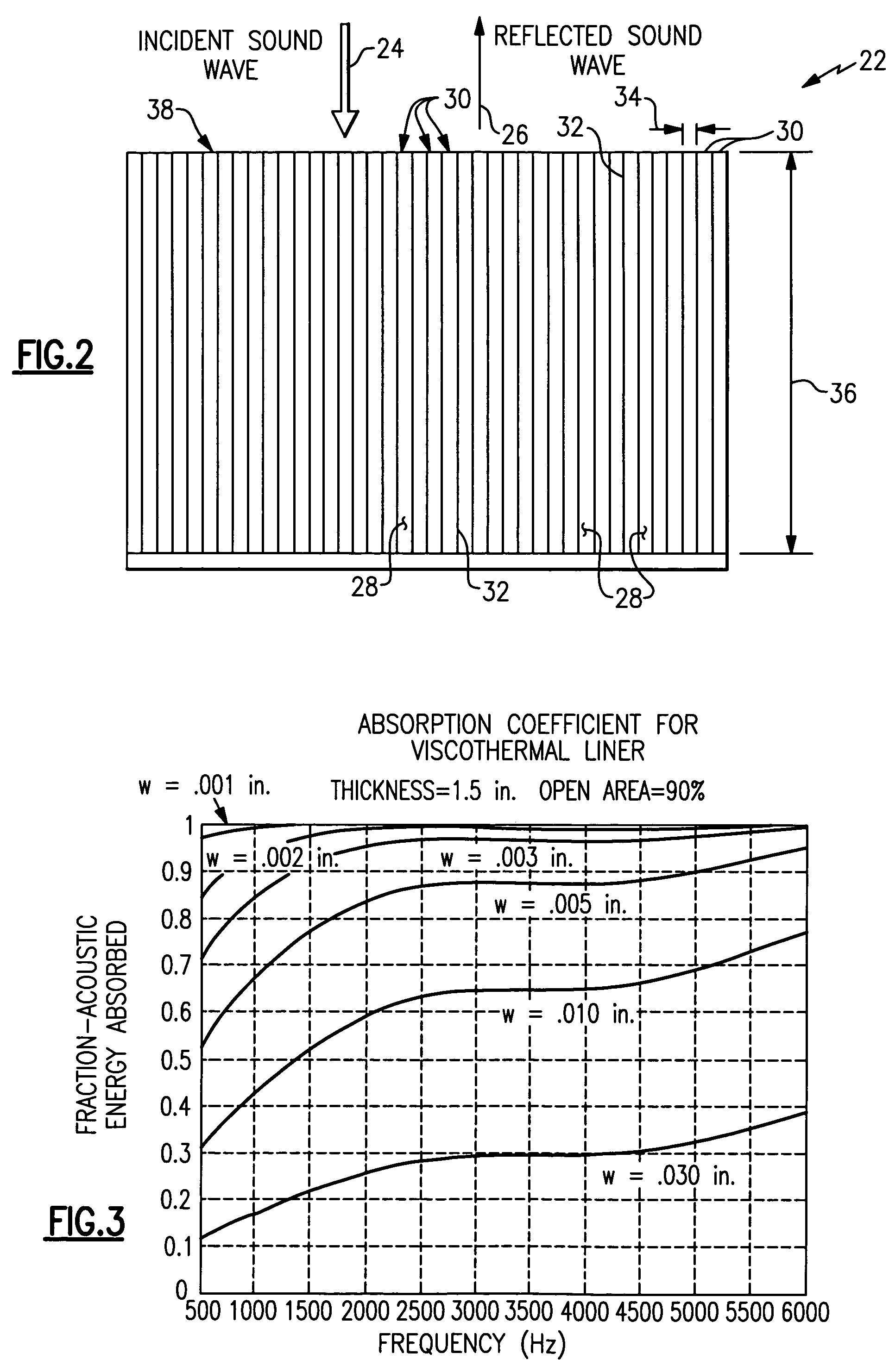Anechoic visco-thermal liner
a visco-thermal liner and anechoic technology, applied in the field of acoustic liner, can solve the problems of limiting the range of frequencies that can be effectively attenuated, the number and size of openings that can be provided within the face sheet, and the practicability of limiting the range of openings, etc., to achieve a large opening area, large surface area, and thin overall thickness of the liner
- Summary
- Abstract
- Description
- Claims
- Application Information
AI Technical Summary
Benefits of technology
Problems solved by technology
Method used
Image
Examples
Embodiment Construction
[0022]Referring to FIG. 1 an aircraft engine assembly 10 is schematically shown and includes a compressor fan 14 that compresses incoming air that is fed to a combustor 16. In the combustor 16, fuel is mixed with the compressed air and ignited. The resulting high speed exhaust gases drive a turbine 18 that in turn drives the compressor 14. The engine assembly 10 includes a housing 12 that protects the engine assembly from the environment and channels air to the compressor fan 15. The engine assembly 10 generates sound energy that propagates from the housing 12.
[0023]The housing 12 includes an inner surface 20 and acoustic liners 22. The acoustic liners 22 are disposed forward of compressor fan 14 and aft of the turbine 18. Although acoustic liners 22 are shown forward and aft in the housing 12, other locations within the housing 12 requiring sound attenuation may also include the acoustic liner 22 such as flow splitters 25. The acoustic liner 22 absorbs sound energy to reduce the ma...
PUM
 Login to View More
Login to View More Abstract
Description
Claims
Application Information
 Login to View More
Login to View More - R&D
- Intellectual Property
- Life Sciences
- Materials
- Tech Scout
- Unparalleled Data Quality
- Higher Quality Content
- 60% Fewer Hallucinations
Browse by: Latest US Patents, China's latest patents, Technical Efficacy Thesaurus, Application Domain, Technology Topic, Popular Technical Reports.
© 2025 PatSnap. All rights reserved.Legal|Privacy policy|Modern Slavery Act Transparency Statement|Sitemap|About US| Contact US: help@patsnap.com



